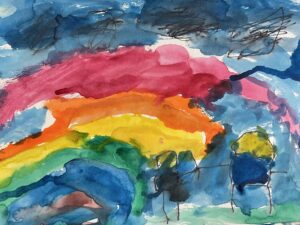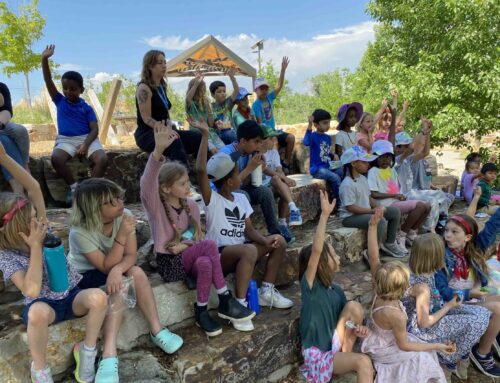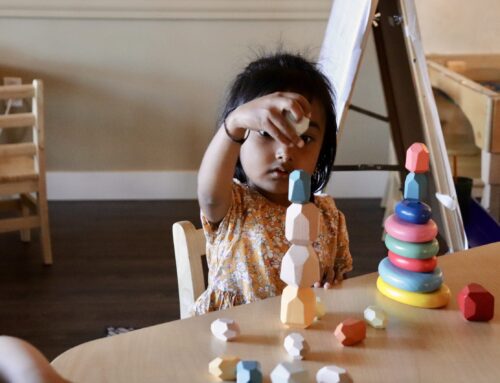
At the heart of our teaching practice, curriculum, and community is an effervescent understanding of inquiry. We at Compositive Primary are committed to beginning each adventure with a juicy question that inspires a contagious curiosity for children and adults alike. Inquiry engages the whole child through engaging provocations and reflections — it challenges children to become thinkers and doers of our future. But how does it start and how can we all work together to sustain an inquiry-based model of education in our school and our homes?
As we begin to plan new inquiry arcs, we start by exploring the needs of our kiddos. Do they need to examine a topic or problem that has arisen in their classroom community? Do they need to look closely at something which they are curious about? Do they need to be challenged in a new and enticing way through an arc? These questions point to the ways in which we construct arcs that are simultaneously responsive and reflective — challenging and inviting. By building from these understandings, we are able to create a foundation for authentic inquiry which is interwoven by and with the kiddos in each classroom.
Once we’ve settled on the needs of kiddos in a certain classroom, our work in crafting a tantalizing question begins. Sometimes these are questions in sentence form (“What happens when we lose?”), and sometimes, the times I love, they are questions through provocations and open-ended possibilities (How will kiddos react and then reflect on a dramatic event?). Questions are bigger than topics in pre-primary and primary education — in Asking Better Questions Norah Morgan and Juliana Saxtron understand that questions are critical to a democratic society. By demonstrating questions and a multitude of possibilities, we are supporting responsibilities which “depend upon the skill of every member of society to ask questions: What is this really about? Whose values are being addressed? Who or what will benefit? Who or what will be diminished? . . . The ability and courage to ask such questions lie at the core of the democratic process” (Morgan & Saxton, p. 9). In this way, the modeling of an open-ended question is a reflection of our commitment to Engage & Serve our broader democratic society.
Once we’ve landed on a question (or sometimes these exciting bits come first and a question arises from them) we develop all the enticing bits of an arc. What are we excited about in this arc? How can we hook kids into the adventure of this inquiry? What new and exciting materials, experiences, and challenges will they dig into? This part of the process is full of ideation and curiosity. We as the adults work to imagine a possible scope and sequence with a multitude of alternative paths and possibilities. Whatever we lay out here rarely comes to fruition because we prize emergent understandings and new questions and ideas from our kiddos. Sometimes this is an opportunity to backwards-plan an arc from a big project we think would really capture the imaginations of our children. Other times, it is more of a menu-curation where we lay out a number of different paths and choices that can be taken by different children. The paths toward understanding which form some of the rich questions are less important than the opportunities to explore a question from a multitude of perspectives.

After all of this comes a concentrated discussion on the opening event — what will pull children into the inquiry with a sense of wonder? In one of our 3/4s classes this arc, that’s an invitation to create a zoo that only accepts certain types of animals (What about other animals?!). In a K/1 class, it’s listing our requirements as humans along a spectrum of “wants” to “needs.” These opening provocations help us all to begin an inquiry arc in shallow water before diving more deeply.
The shape of an arc is useful to consider when imagining this process for teachers and students. The arc begins in the shallows as children wade into the water of possibility. As the arc continues, it grows deeper and deeper in tandem with the fathoms of research that children are producing and analyzing. The arc shallows out again on the other end as learning is distilled and curated to be shared with our community before it begins again.
As we dive into our final inquiry arcs of the school year, I invite you to bring the big questions of your child’s classroom into your home. How might you help them to think more deeply and explore more freely? How might you bring open-ended questions into your regular conversations? How might you model curiosity and the joy of learning as a way of being and a way of supporting the learning your kiddo is doing every day at school?
By modeling question-asking and curiosity about the world, you will be opening up possibilities for your child and family — you will also be supporting the foundation of our democratic society. One question at a time.







